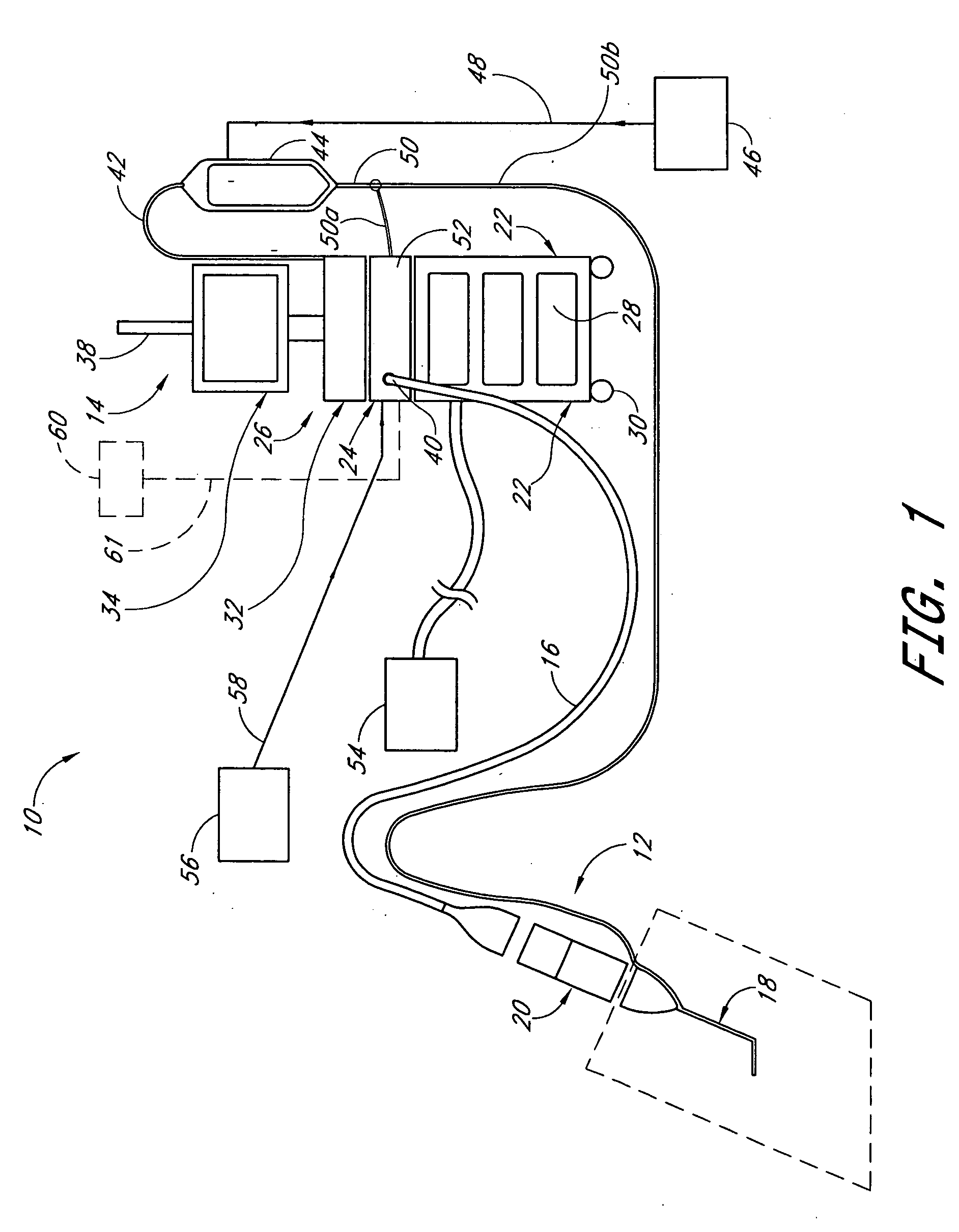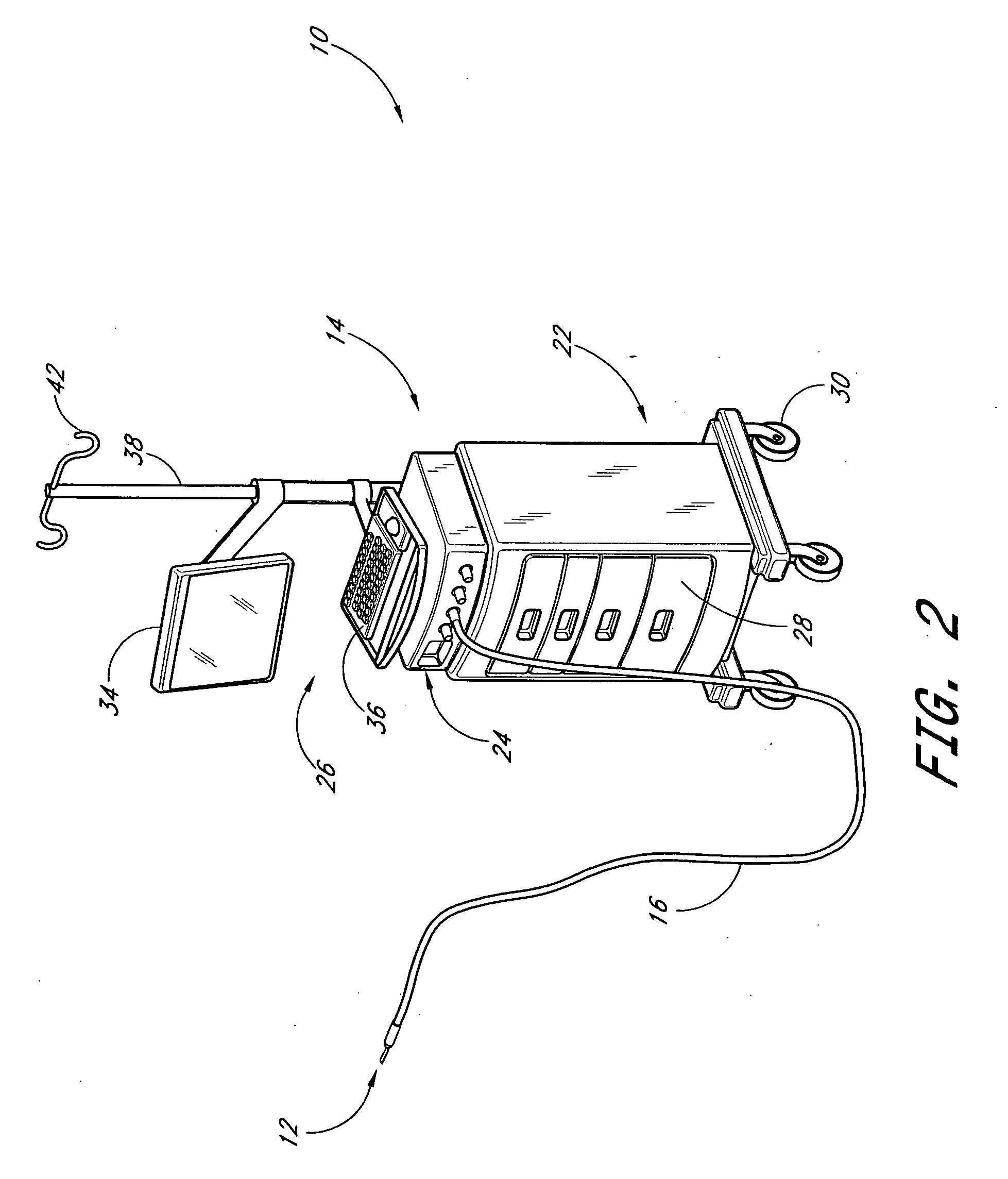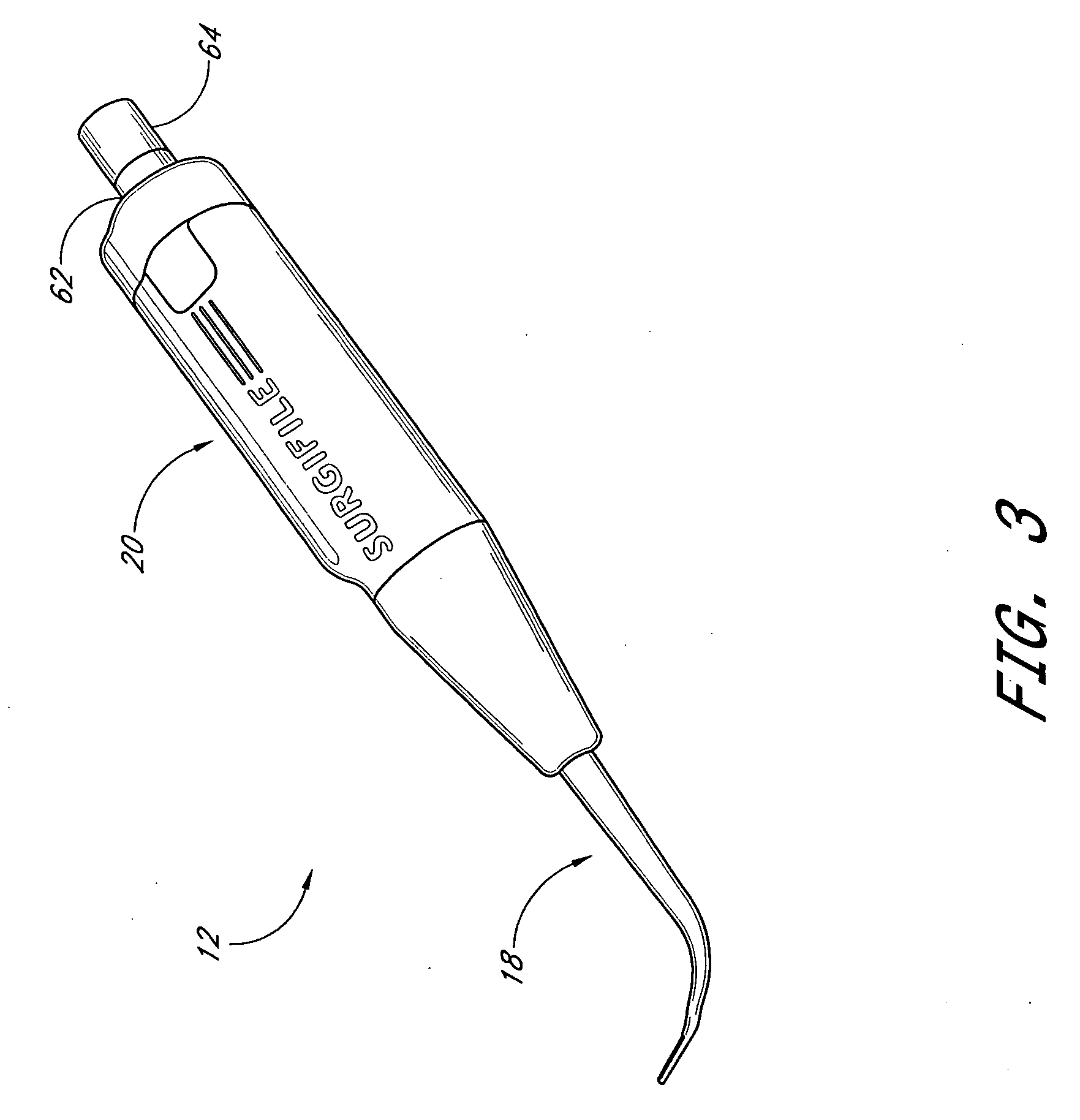Drive apparatus
a drive device and drive shaft technology, applied in the field of tissue cutting and removal systems, can solve the problems of true back problems, pain from nerve irritation and compression, and the inability to work,
- Summary
- Abstract
- Description
- Claims
- Application Information
AI Technical Summary
Benefits of technology
Problems solved by technology
Method used
Image
Examples
Embodiment Construction
[0080] The preferred embodiments of the invention described herein relate generally to systems and methods for tissue cutting and removal and, in particular, to a shielded reciprocating surgical file system for cutting, removing, shaping and sculpturing bone and / or tissue material under direct vision.
[0081] While the description sets forth various embodiment specific details, it will be appreciated that the description is illustrative only and should not be construed in any way as limiting the invention. Furthermore, various applications of the invention, and modifications thereto, which may occur to those who are skilled in the art, are also encompassed by the general concepts described herein.
[0082]FIGS. 1 and 2 show a surgical file system 10 generally comprising a motorized reciprocating shielded surgical file instrument, apparatus, assembly or device 12 and a mobile portable control system 14 connected via a flexible umbilical cable 16. The surgical file device 12 generally co...
PUM
 Login to View More
Login to View More Abstract
Description
Claims
Application Information
 Login to View More
Login to View More - R&D
- Intellectual Property
- Life Sciences
- Materials
- Tech Scout
- Unparalleled Data Quality
- Higher Quality Content
- 60% Fewer Hallucinations
Browse by: Latest US Patents, China's latest patents, Technical Efficacy Thesaurus, Application Domain, Technology Topic, Popular Technical Reports.
© 2025 PatSnap. All rights reserved.Legal|Privacy policy|Modern Slavery Act Transparency Statement|Sitemap|About US| Contact US: help@patsnap.com



